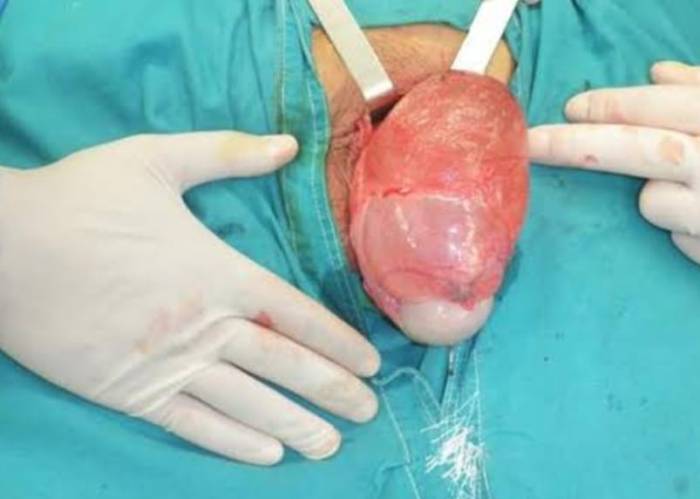
hydrocele
A hydrocele is a fluid-filled sack in the scrotum.
Alternative Names
Processus vaginalis; Patent processus vaginalis
Causes, incidence, and risk factors
Hydroceles are common in newborn infants.
During a baby's development in the womb, the testicles descend from the abdomen through tube into the scrotum. Hydroceles occur when this tube does not close. Fluid drains from the abdomen through the open tube and gets trapped in the scrotum. This causes the scrotum to swell.
Most hydroceles go away a few months after birth. Sometimes, a hydrocele may occur with an inguinal hernia.
Hydroceles may also be caused by:
Buildup of the normal fluid around the testicle. This may occur because the body makes too much of the fluid or it does not drain well. (This type of hydrocele is more common in older men.)
Inflammation or injury of the testicle or epididymis
Symptoms
The main symptom is a painless, swollen testicle, which feels like a water balloon. A hydrocele may occur on one or both sides.
Signs and tests
You will have a physical exam. The health care provider will find that the scrotum is swollen but not painful to the touch. Often, the testicle cannot be felt because of the fluid around it. The size of the fluid-filled sack can sometimes be increased and decreased by putting pressure on the abdomen or the scrotum.
ADVERTISEMENT
If the size of the fluid collection changes, it is more likely to be due to an inguinal hernia.
Hydroceles can be easily seen by shining a flashlight through the swollen part of the scrotum. If the scrotum is full of clear fluid, the scrotum will light up.
You may need an ultrasound to confirm the diagnosis.
Treatment
Hydroceles are not harmful most of the time. They are treated only when they cause infection or discomfort.
Hydroceles from an inguinal hernia should be fixed with surgery as soon as possible. Hydroceles that do not go away on their own after a few months may need surgery. A surgical procedure called a hydrocelectomy (removal of sac lining) is often done to correct the problem. Needle drainage does not work well because the fluid will come back.
Expectations (prognosis)
Simple hydroceles in children often go away without surgery. In adults, hydroceles usually do not go away on their own. If surgery is needed, it is an easy procedure with very good outcomes.



